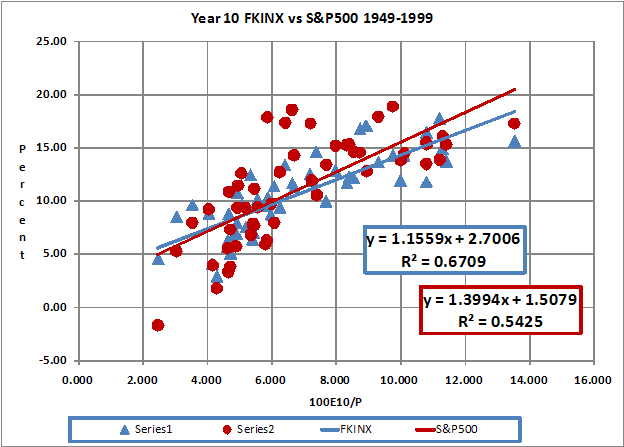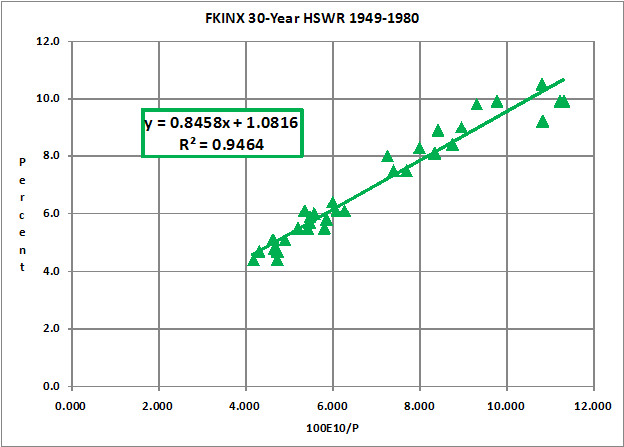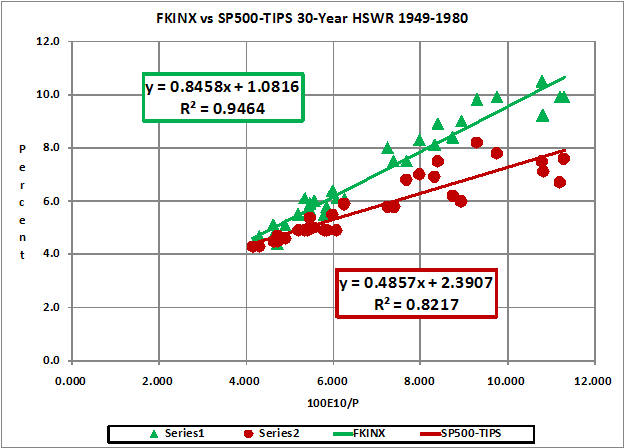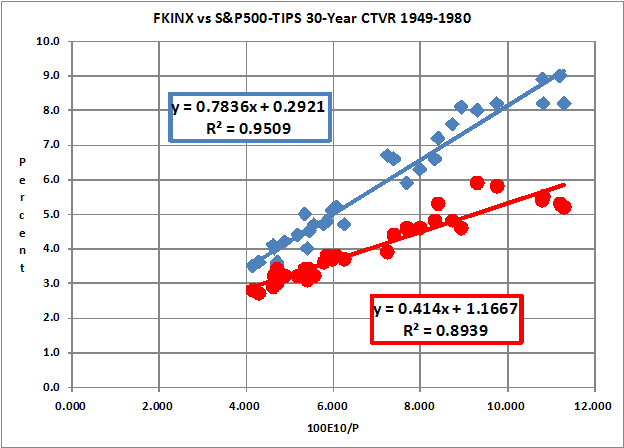|
Current Research O: An Active Management ExampleUpdated: June 10, 2009. Current Research IndexCurrent Research O: An Active Management ExampleThe Morningstar Income & Dividend Investing discussion board recently included a listing of 60 years of FKINX total (nominal) return data. The managers were able to match the return of the S&P500 index over the years 1949-2009 with much lower volatility. You can see this in this comparison graphic. It shows Year 10 total NOMINAL returns. 
FKINX Historical Surviving Withdrawal RatesFKINX lifts the 30-Year Historical Surviving Withdrawal Rate. Today’s Safe Withdrawal Rate is 5.5% to 6.0% [P/E10=16] of the original balance. Adjust withdrawals to match inflation. You can use the Year 30 Retirement Risk Evaluator [Year 30 SWR button on the left] to make comparisons. 

FKINX Constant Terminal Value Rates

A Helpful TheoremTo calculate withdrawal rates for various final balances, it is sufficient to know the withdrawal rates for final balances of zero and 100% of the initial balance. Rates for intermediate balances maintain the same proportions. Statistical ApproximationsI have copied this part of a write up from Professor Peter Ponzo’s Gummy Stuff web site. From 2005.
|